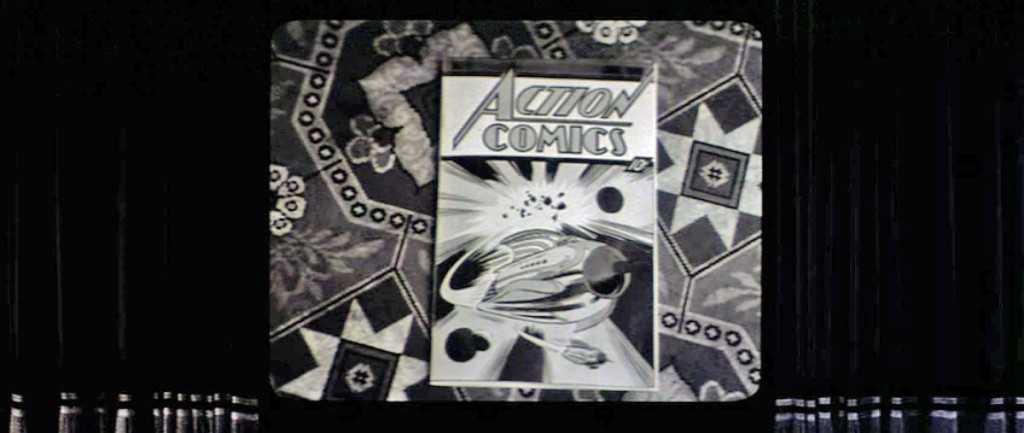Superman: Superman: The Movie part 1
The thing to remember about Superman: The Movie is that it was the first of its kind. Made in 1978 by middle-aged men, it was poised between nostalgia and hipness, gravity and camp, cutting-edge verisimilitude and old-fashioned Hollywood spectacle. It wants to take its subject matter seriously, but can’t quite commit to it fully.
I was 17 when it came out, and theoretically its target audience. The advertising, John Williams score and space-bound title sequence made it clear that it was going after the Star Wars audience, which included children who didn’t know about Buck Rogers serials and nostalgic grownups who did. Having never read the comics, my concept of Superman in 1978 was limited to the syndicated reruns of the George Reeves show from the 1950s (which had borrowed heavily from the radio shows of the 1940s). The stunning Fleischer Superman shorts were a long-gone artifact at that point, not yet available at the counters of every drugstore in America. Only one, “Superman and the Mechanical Monsters,” had been shown to American audiences in recent decades, in the 1977 Fantastic Animation Festival, which was, in and of itself, a cultural touchstone in the pre-cable days of American geekdom.
The George Reeves show never went to Krypton or dwelled on Superman’s tragic backstory (much as the 1966 Batman show never once mentioned why Bruce Wayne dresses up as a bat to fight crime), so the idea of a movie presenting, with grandeur, “serious” actors, a large budget and state-of-the-art special effects (that look laughably terrible today) was breaking new ground for a viewer like me. And the first couple of acts really hammered home the weighty mythology and came to form the idea of Superman in the minds of my generation.
So the movie opens with a shot of curtains opening to reveal a 1930s movie screen, with standard 1:33 aspect ratio. The curtains, in an of themselves, were significant in 1978 because that was the moment that multiplexes were exploding, and curtains in movie theaters were becoming a thing of the past. The curtains in the movie palace were there to remind the audience of the ritual of the theater, of the glamour that awaited the audience on the other side of those curtains – the multiplex did away with glamour and ritual. They turned moviegoing into a transaction, not a passport to adventure. By opening with a shot of curtains, black-and-white curtains at that, the movie seeks to frame its presentation in a sense of tradition, of promises made and kept.
(The theater where I saw Superman was, in fact, a converted vaudeville house from the 1920s, complete with stage, dressing rooms, orchestra pit and fake “Spanish Piazza” decor. When the curtains opened to reveal a movie that begins with curtains opening, it made the moment doubly somber.)
